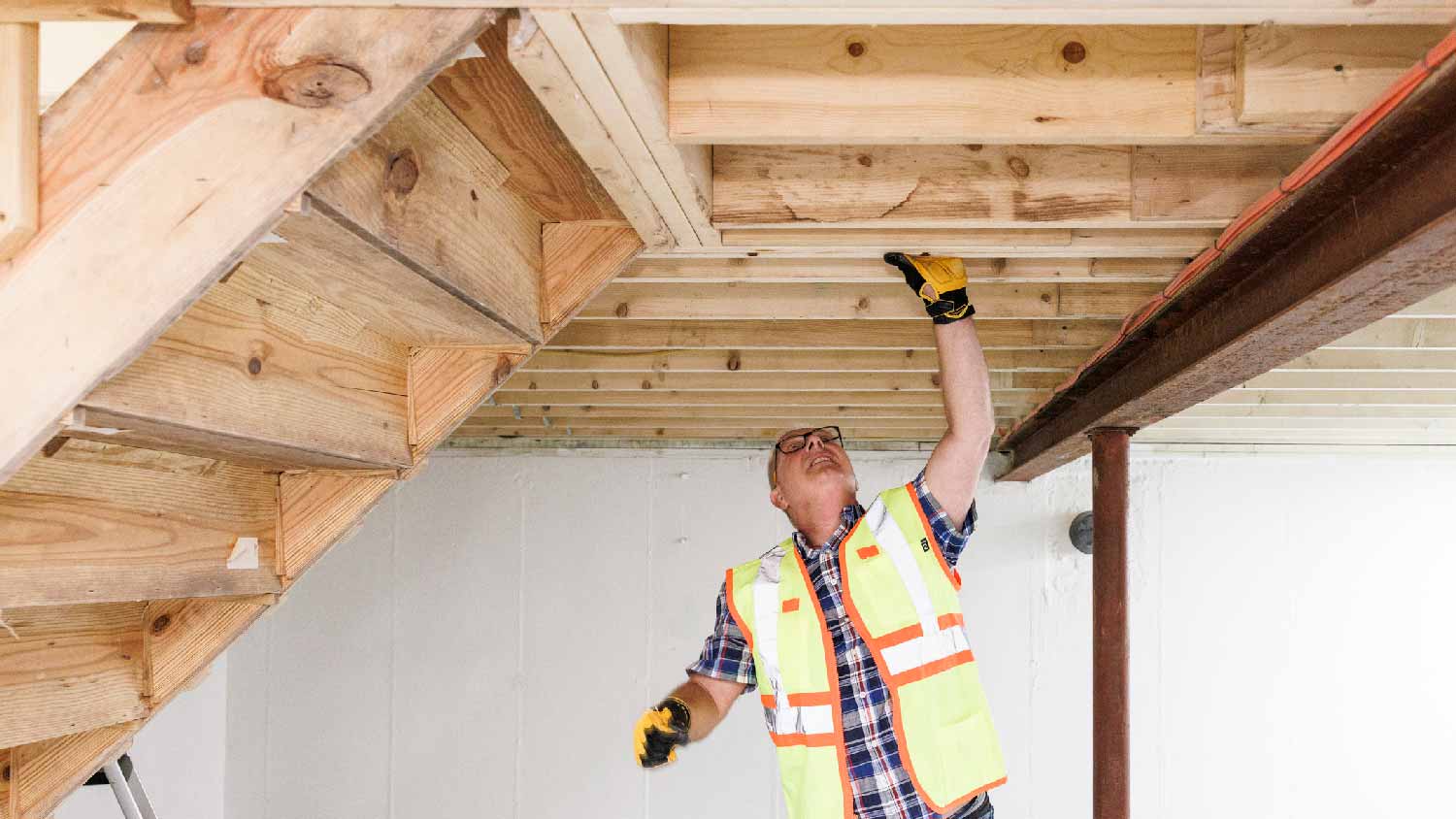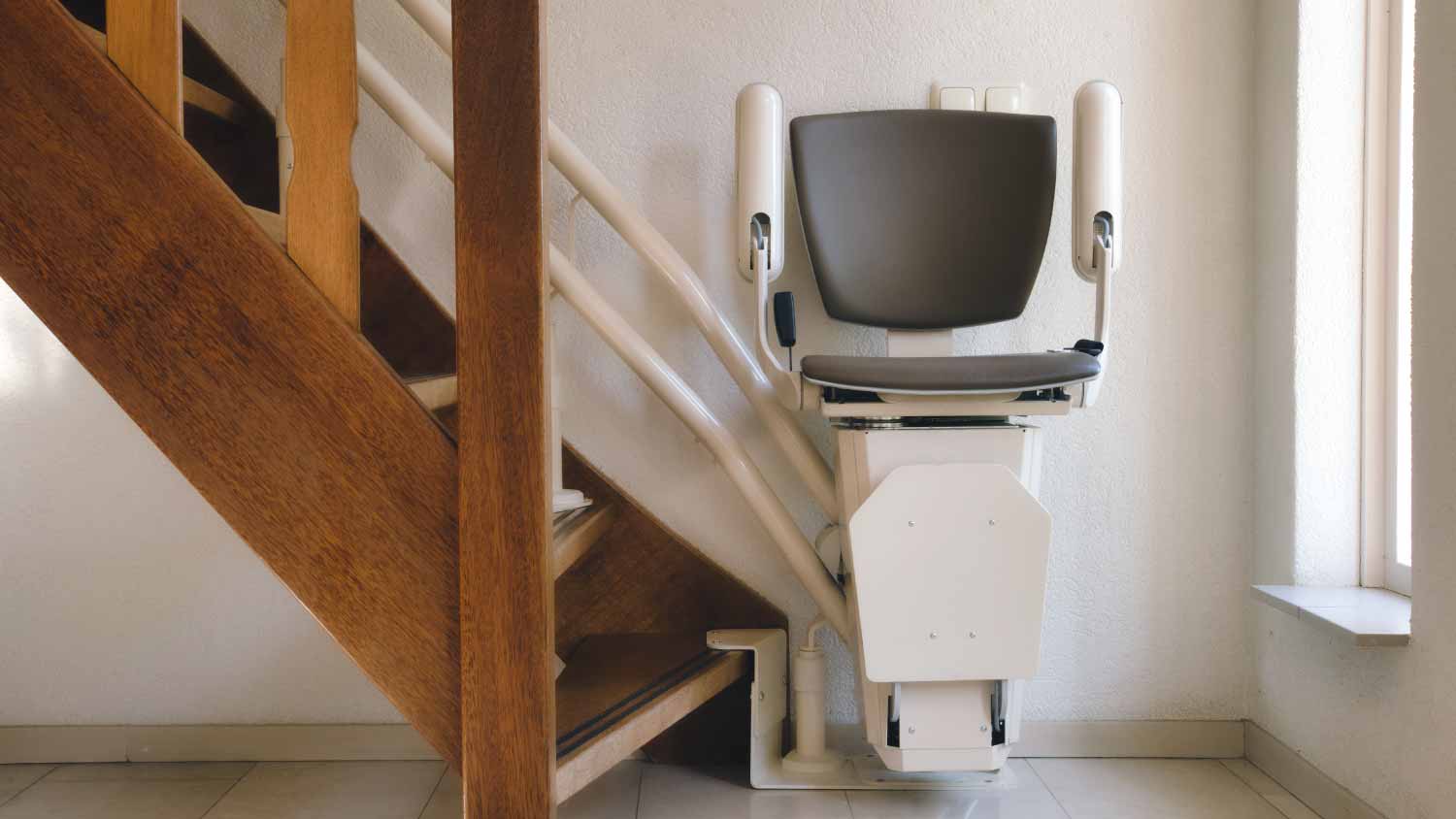
Curious how much general contractors charge per hour? Discover hourly rates, key cost factors, and tips to save on your next home project.
Learn what you can safely suspend from above


Ceiling joists support the roof and building weight.
Wooden joists hold 50 to 100 pounds per square foot.
Standard ceiling joist spacing is 16 or 24 inches apart.
Find joists with stud finders or by measuring, tapping, or looking at exposed joists.
Use the right hanging hardware to suspend items from ceiling joists.
Ceilings don’t have to be unused space. Thanks to the strength of ceiling joists, you can hang lighting and plants or suspend chairs and play platforms. Ceiling joists run above ceilings, support the roof, distribute the structural load, and prevent walls from bowing. Below, we discuss how much weight a ceiling joist can hold, how to find them, and how to hang your favorite decor safely.
How much weight ceiling joists hold depends on their size and spacing and what they’re made of. Wooden joists can support 50 to 100 pounds per square foot. Steel joists are more common in commercial buildings and can handle higher loads.
Joists are spaced at regular intervals of 16 or 24 inches apart. Larger joists spanning shorter distances can carry more weight. When joists are closer together, the weight distribution is greater, and their load-bearing capacity increases. The longer the span, the less weight the joist can handle.

When hanging something heavy from your ceiling, start by finding a joist. Just like with studs in walls, joists give you something solid to drill or screw into so the item you’re hanging isn’t relying on the strength of drywall or ceiling materials. Remember that joists are spaced on center, meaning you’ll measure from the center of one joist to the center of another.
Here are the four best ways to find a ceiling joist:
Use a stud finder: Electronic stud finders are the easiest way to locate ceiling joists. They detect dense materials, and joists are the densest material in ceilings. Run the stud finder across the ceiling until it beeps to indicate a joist.
Measure from the wall: Normal ceiling joist spacing is 16- or 24-inch intervals, so measure out from a wall to estimate where a joist will be. Then, use a stud finder or drill a small test hole to confirm.
Tap the ceiling: Joists are solid, and drywall isn’t, so you can hear a difference when you tap. Use a hammer or broomstick to gently tap the ceiling, moving out from a wall toward the center. You’ll hear a hollow sound when tapping between joists and a solid thump when tapping directly over one. This isn’t the most accurate method, so use it as a backup or to double-check other methods.
Look in your attic or basement: If you can access the attic or basement directly above or below the room where you want to hang an item from the ceiling, use visible joists in those rooms to help you do the math. Measure the joist location, then measure the ceiling to locate the joist. Use a stud finder to confirm.
If you’re uncomfortable or not confident finding ceiling joists, call a local ceiling company to help map out the ceiling or make repairs.
It’s crucial to understand the load-bearing capacity of ceiling joists if you’re going to hang anything from the ceiling. If you exceed the weight limit of a joist, you can damage it or crack or collapse the ceiling. Once you’ve found a joist, confirm you’re using the right hanging method and hardware to suspend your item safely. Here are some of the best options:
Ceiling hooks and anchors: Buy heavy-duty ceiling hooks and anchors that are rated for the weight of your item. Screw the hook directly into the center of the joist.
Lag screws: When installing home gym equipment, punching bags, swings, or seats, use lag screws or lag bolts. These large wood screws have hexagonal heads designed to hold heavy weight and withstand movement stress. To install a lag screw, drill a pilot hole to prevent splitting the joist, then screw directly into the wood.
Mounting brackets or mounting beams: To hang heavy items like hammocks, chandeliers, floating beds, or platforms, consider specialized mounting brackets that distribute weight across several joists. Install a ceiling beam for maximum support.
From average costs to expert advice, get all the answers you need to get your job done.

Curious how much general contractors charge per hour? Discover hourly rates, key cost factors, and tips to save on your next home project.

Sometimes it’s best to start fresh with a new garage, and that starts with tearing down the old one. Learn how much it will cost to demolish your garage.

Building permits are essential. Here’s everything you need to know about building permit costs to budget accordingly for your building project.

Have stair lift questions? Before installing or replacing a stair lift, discuss these key questions with your contractor to ensure a smooth and safe project.

Build a strong and safe home of your dreams. Master the completion of a sturdy structure with these comprehensive steps on how to frame a wall for your home.

Many homeowners are unsure about tipping contractors, and if so, how much. This quick guide will help you understand whether you should tip.